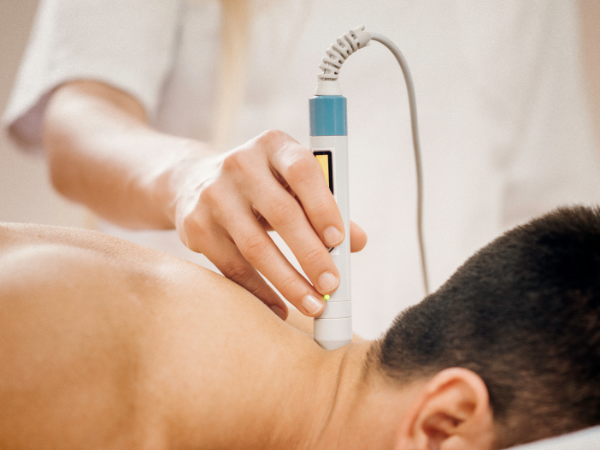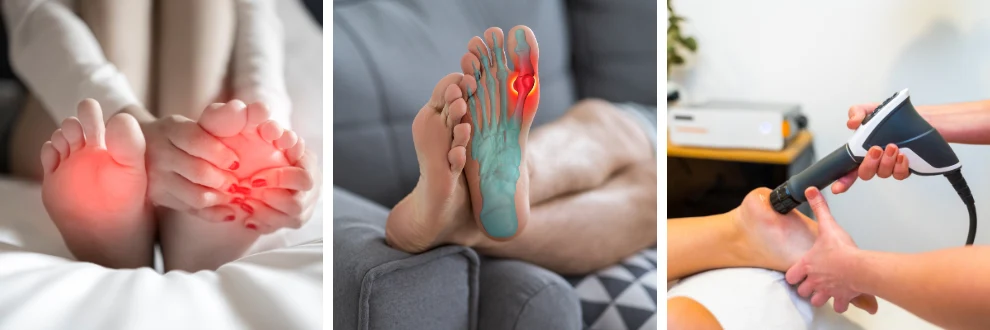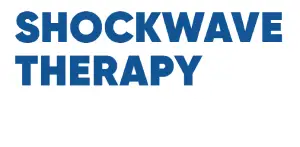Shockwave Therapy:
What Does It Treat?
Here we take a look at two of the most common conditions we treat every day, with Shockwave Therapy here at Core Physical Therapy. Experience reduced pain, lessen your dependance on medication and discover a new lease on life!

Plantar Fasciitis - How Does Shockwave Therapy Help?
One of the pain points that we see a lot with shockwave is plantar fasciitis or Achilles tendonitis. When a patient has this they usually have pain when walking. They might not be able to stay active, go to the gym, or walk with their grandkids. So when these people come in we will use shockwave to map out the affected area. This process involves moving the sound waves over the tissue of the lower leg and the foot. Because of the mechanical stimuli that the soundwave generates, the inflamed or tight areas will feel like an ache so the patient can give us real-time feedback on where they are feeling that pain. When you go over healthy tissue, you don’t feel anything but when the soundwaves hit those inflamed or damaged areas the patient will be able to describe an achy feeling which helps us to identify and treat the root cause of the problem.
The application of shockwave therapy begins with a thorough assessment to locate the precise area of pain. During the treatment, the practitioner uses a handheld device to deliver the acoustic waves to the affected region. The sensation felt by the patient helps to pinpoint the specific sites that require attention. These waves stimulate the body’s natural healing mechanisms, promoting the repair of the plantar fascia. With the sound waves, we can treat those areas on a cellular level, bringing more oxygen and nutrients to the affected area with increased blood flow. By breaking up scar tissue and trigger points, you will start to see an increased range of motion, less pain, and strengthening of the muscles.

Following the shockwave sessions, manual therapies such as active release techniques and soft tissue mobilizations are employed to enhance the benefits of the treatment. We might do some stretching and strengthening after the shockwave treatment, where we will see these patients twice a week for six weeks. Depending on how you respond to the treatments, we might continue to provide care once a week but at this point, the patient will be ready to take on exercise at home on their own.
The combination of shockwave therapy, manual techniques, and targeted exercises create a comprehensive approach to treating plantar fasciitis, allowing patients to regain their mobility and return to their daily activities with reduced pain.
If you want to know what it costs – and what availability we have, then please just click the button above and complete the short form.
Shoulder Pain - How Does Shockwave Help?

The pressure is a dull ache that they can feel the difference between healthy tissue and damaged tissue. Then by mapping it, we know where the actual source of the problem is so we can specifically treat these areas with the sound waves which is going to increase blood flow, bring more oxygen to that area, accelerate healing, and break up any scar tissue that might be there.
At this point, the patient would have more range of motion and less pain which will allow us to go into some other treatments in the session, such as stretching the tissues or performing active release techniques on the tissues, which feel really good.
After the initial treatment period, we usually see the patient for an additional two times a week for up to six weeks. We might then reduce that to once a week depending on how the patient’s rehabilitation is progressing.
Want Help To Decide If Shockwave Therapy Is Right For You?
- Free Discovery Session*
Are you unsure if shockwave is right for you? Would you prefer to talk with a PT before making a decision? All you have to do is click the link below to fill out a simple form.
- Talk to a Professional First
